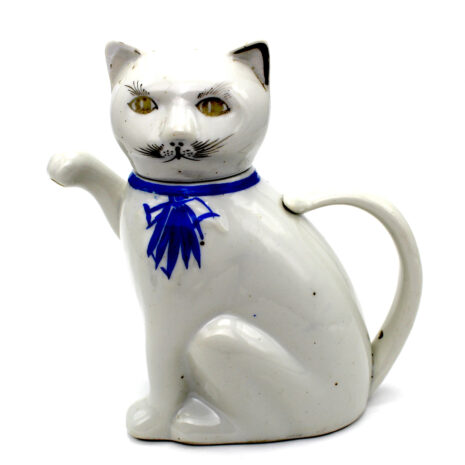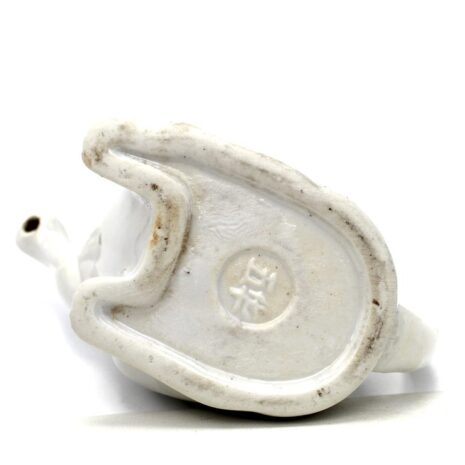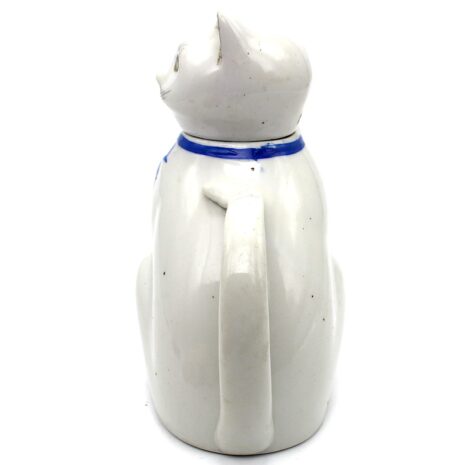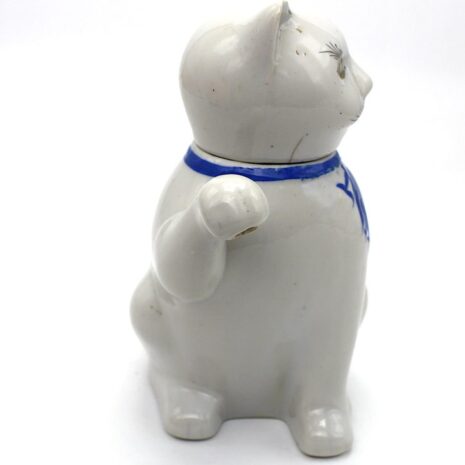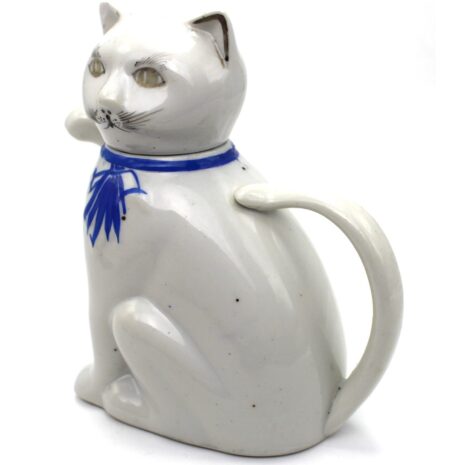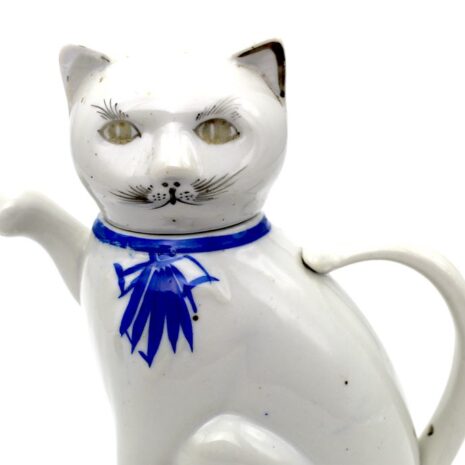Antique Porcelain Cat Teapot, China (16944B)
Original price was: $145.00.$125.00Current price is: $125.00.
Ht: 6.25” W: 5.5” D: 3.25” | FREE SHIPPING WITHIN CONTINENTAL U.S.
The Chinese characters within a circled seal in the mold on the bottom indicate this teapot is an antique. As the thin ribbon blue collar as wishes for long life, it is a perfect birthday gift. Recommended for decorative use only.
Description
In China and Japan cats are often portrayed as small teapots that provide individualized tea servings and better retain heat. White porcelain with a clear glaze was often the preferred pottery form for teaware as it was viewed as more elegant. Since Mao (猫), the word for cat, is a homophone for octogenarian, it is a well-known Chinese longevity symbol (shou 壽). Qing dynasty and Chinese Republic cat teapots are often portrayed with a raised paw as its spout, a popular motif of a “beckoning cat” like the famous Japanese Maneki Neko widely used in feng shui, especially among Chinese merchants, as a greeting and welcoming gesture to promote and maintain positive energy (chi) and bring good luck and fortune into their store. These cats often have long ribbons (shoudai) around their necks, a homophone symbolizing longevity (shou 壽). They are charming pouring vessels that will enrich any space, especially a kitchen and their symbolic wishes for a long life and good luck make them appropriate gifts for any occasion such as birthdays and housewarming gifts. It is in excellent condition with normal minor dark dot-like firing imperfections seen on most white glazed objects and minor scratches from age and its use.
The head removable to fill with water and the long sinuous tail is a handle. As the thin ribbon blue collar as wishes for long life, it is a perfect birthday gift. The Chinese characters within a circled seal in the mold on the bottom indicate it an antique. As with all antique teaware, we advise they be used only for decorative purposes.
Additional information
| Weight | 5 lbs |
|---|---|
| Dimensions | 10 × 10 × 10 in |
| Place of Origin | China |
| Period | Antique, Qing Dynasty |
| Date | 1890-1920 |
| Materials and Technique | Porcelain |
| Dimensions (inches) | Ht: 6.25” W: 5.5” D: 3.25” |
| Dimensions (metric) | Ht: 15.87cm W: 13.97cm D:8.26cm |
| Condition | Excellent, fine patina demonstrating age and use |
| Item Number | 16944B-TLE |
| Shipping Box Size |

